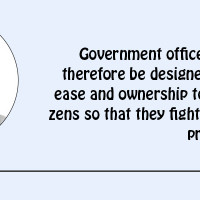- Friday, 31 October 2025
Manage Shanty Towns Better
Shanty towns are scattered all over the world, be it in developing countries or developed countries. However, they are more predominant in developing countries than in developed countries. India, Bangladesh, Pakistan, Kenya, Haiti, South Africa and other poor countries have shanty towns. Some of the shanty towns are found in parts of the European Union, Spain, France and the USA.
In Nepal, too, there are squatter settlements housing poor people called sukumbasis. Shanty towns are settlements having makeshift houses made of low-quality materials such as mud, wood, cardboard boxes, plywood, plastic sheets or corrugated tin sheets. Such settlements, also called slums, are often found in hazardous areas such as near railway sidings, on swampland or on hillsides. They are also found on vacant public land, on riverbanks or in forested land. They are found in undesirable or unsuitable areas such as near quarries, industrial areas or garbage dumping sites. Most of the shanty towns are located on the fringes of cities or towns, away from the city centre.
Origin
In the US in 1929, unemployed youths were forcibly chucked out of their houses. Nowhere to go, they began building shanty towns. However, in 1930, the Great Depression set in and the US economy, like in other countries, deteriorated. With the economy in the doldrums, more and more people began living in shanty towns. This is how shanty towns emerged in the world. In the US, the shanty towns built during the Great Depression also called Hoovervilles.
Some of the most famous shanty towns are Dharavi (India), Ciudad Neza (Mexico), Orangi (Pakistan) and Khayelitsha (South Africa). Dharavi also featured in the movie Slumdog Millionaire, making the shanty town popular. Some of the shanty towns are found in developed cities like Athens, Los Angeles or Madrid. Some countries have so many shanty towns that they have their own words for them. Brazil has favelas, Peru barriadas, India bustees and South Africa townships.
Shanty towns emerge owing to several factors such as ever-burgeoning population growth and migration. In the Kathmandu valley, slum areas have developed to house people migrating from outside the valley and poor people. When a large number of people are concentrated in a town or city, a shortage of land does occur. And people begin building makeshift houses where there is vacant land.
Shanty towns are unplanned areas. The houses built there may not have house numbers. Even the streets may have no names. Shanty towns lack basic amenities such as clean drinking water, sanitation, communication facilities like telephones, healthcare, transport and education. With lack of jobs, poverty is widespread in shanty towns. This results in an increase in crimes such as theft, robbery, kidnapping and even murder. Most residents of shanty towns earn by selling fruit or vegetables, washing cars or collecting scrap.
Population density is among the highest in shanty towns. With crowded conditions with problems relating to sanitation and waste management, serious health problems are common in shanty towns. Unavailability of clean drinking water gives rise to water-borne diseases such as diarrhoea, dysentery, cholera, typhoid, giardiasis and salmonellosis. Owing to filthy conditions, the infant mortality rate is high and life expectancy is short in shanty towns. Pests such as rats and mosquitoes may also infest shanty towns.
Shanty towns are prone to natural disasters. They are prone to rains, floods or storms. Those built on hillsides are prone to landslides. Those built near polluting industrial areas or quarries affect the health of the residents. Flooding affected the slum areas near the rivers in the Kathmandu valley during the monsoon season this year. Shanty towns are going through several problems. Governments, both central and local, may take steps to improve such areas. Arrangements for drinking water, electricity, sanitation and waste management may be made.
Likewise, schools may be built, healthcare facilities may be constructed, transport may be provided for and suchlike measures may be taken. Apartments may also be built to house slum-dwellers. The government constructed an apartment building at Ichangu to accommodate the people living on the riverside areas of the Kathmandu valley, but they refused to move there. They want to live in the core areas of the valley. The slum-clearance efforts on the part of the Kathmandu Metropolitan City have not been able to materialise owing to the adamant stance of the slum-dwellers that they will not budge an inch from the slums until they are given plots of land in Kathmandu.
The standard of living of the residents of shanty towns can be improved by embarking upon self-help schemes. Under the schemes, the residents are given building and other materials to improve their shanties. They may also get rights of ownership while local authorities make arrangements for water, electricity, waste management and the like.
Service schemes
Likewise, under the site and service schemes, land is divided into plots. Basic facilities are provided by governments. Roads are built for easy conveyance to city areas where the residents of shanty towns can work. Such residents may be provided with rights of ownership but they have to pay small rents. They are expected to complete the construction of their shelters at their own expense as per the set guidelines. Such a practice is found in India and Brazil.
Shanty towns are an indication of the degrading quality of human life. They represent poverty. Those living in shanty towns do not have adequate amenities of life. There are instances where people have to live their whole life in shanty towns. As such, governments, non-government organisations and other stakeholders should work together to ameliorate the conditions of shanty towns. By developing infrastructure, shanty towns can be developed into middle-class neighbourhoods or small informal settlements for the benefit of the residents.
(Maharjan has been regularly writing on contemporary issues for this daily since 2000.)

















